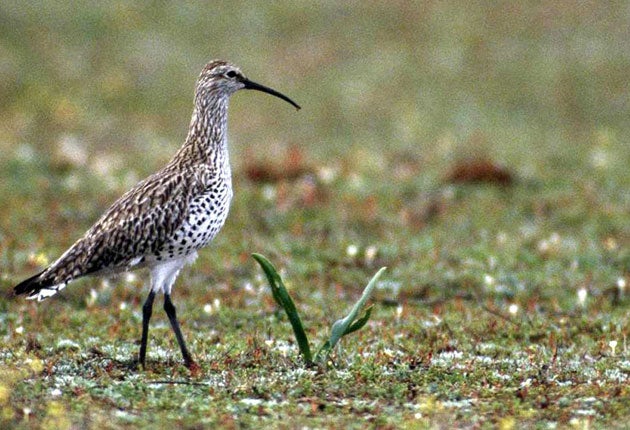Hunt for the world's rarest bird

It's the rarest bird of the Old World, so rare, in fact, that it hasn't even been glimpsed for nearly a decade. It may even be extinct. But conservationists think the slender-billed curlew may still be hanging on, and yesterday a global quest was launched to find it.
Birdwatchers from Britain to Asia are being asked to look out for a species whose breeding grounds have never been found, but are thought to be in some of the world's remotest places – the steppes of Kazakhstan and the marshes of western Siberia. In winter, the bird migrates south-westward through the Middle East to the Mediterranean basin, where it has been seen as far west as Morocco.
But not for many a year. From being a numerous species in the 19th century, hunting has drastically reduced its numbers and now it is thought that the global population may number fewer than 50. One of the last confirmed sightings, remarkably, was in Britain, at Druridge Bay in Northumberland in the spring of 1998. It was extensively photographed and videoed and eventually accepted as a genuine sighting by the Records Committee of the British Ornithologists' Union.
A handsome wader, Numenius tenuirostris, is very similar to the common or garden curlew of Britain's marshes, moors and coasts – it is slightly smaller, with a slightly shorter bill, and slightly different spots on the breast – and so may sometimes be overlooked.
The search for further examples was launched by BirdLife International, the global partnership of bird protection organisations. "This is the holy grail of birdwatching. We need to find it before it's too late to save it," said Nicola Crockford of Britain's Royal Society for the Protection of Birds, one of the main groups behind the campaign, who is chairwoman of the slender-billed curlew working group. "Next winter we will have the first comprehensive international survey to find the bird – it will stretch from Morocco to Iran, the Mediterranean, the Red Sea and the Middle East."
She added: "Although the situation for the slender-billed curlew does look gloomy, the fact that other species have 'risen from the dead' does fuel our optimism. It is just possible that small numbers of the bird may still be wintering in an isolated part of north Africa or the Middle East, or that some unknown nesting site may be discovered."
Subscribe to Independent Premium to bookmark this article
Want to bookmark your favourite articles and stories to read or reference later? Start your Independent Premium subscription today.

Join our commenting forum
Join thought-provoking conversations, follow other Independent readers and see their replies